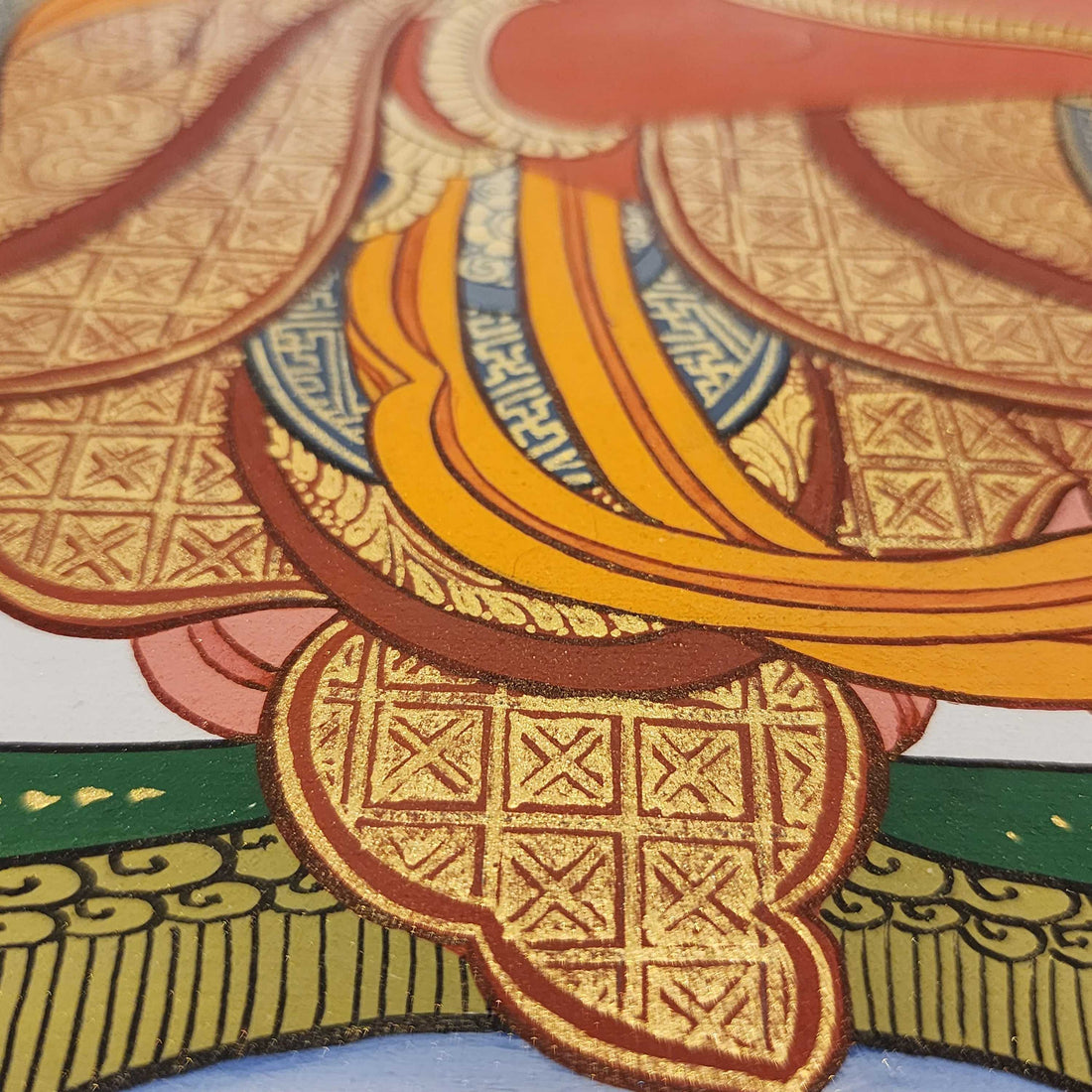
How Tibetan Thangka Paintings Are Made: Sacred Techniques and Traditions
Compartir
Introduction
Every Thangka painting is more than a piece of art. It is a spiritual creation made through devotion, discipline, and centuries-old tradition. Tibetan masters follow precise methods that combine artistic skill with sacred ritual. Understanding how Thangkas are created allows us to appreciate their depth, authenticity, and spiritual significance.
Step 1: Preparing the Canvas
The process begins with a cotton or silk canvas stretched tightly over a wooden frame. The surface is coated with a mixture of chalk and glue, then carefully polished to create a smooth base for painting.
Step 2: Sacred Measurements and Sketching
Thangkas follow strict iconographic guidelines. Artists use precise grids and proportions to ensure every deity, hand gesture (mudra), and symbol matches Buddhist scripture. This accuracy transforms the painting into a true meditation aid rather than just decorative art.
Step 3: Natural Pigments and Colors
Traditionally, pigments are made from ground minerals, plants, and even gold.
—Blue from lapis lazuli.
—Red from cinnabar or ochre.
—Green from malachite.
—Gold leaf and powder for divine radiance.
These natural materials ensure both durability and vibrancy, while carrying symbolic meaning.
Step 4: Layering and Detailing
Artists apply colors in layers, beginning with the background and moving to finer details. Outlines are done with extreme precision, often using brushes made of animal hair. The final detailing can take months. Sometimes years Depending on size and complexity.
Step 5: Consecration and Blessing
A Thangka is considered complete only after it has been blessed by a lama or monk. Mantras and rituals infuse the painting with spiritual energy, transforming it into a sacred object rather than just artwork.
The Life of a Thangka Artist
Becoming a master Thangka painter requires years of apprenticeship under experienced teachers. Beyond technique, artists must cultivate patience, humility, and devotion, since each brushstroke is an act of offering.
Modern and Traditional Thangkas
While some modern Thangkas are created with synthetic colors for accessibility, traditional hand-painted Thangkas remain highly valued for their authenticity, craftsmanship, and spiritual depth. Collectors and practitioners alike treasure them as cultural and spiritual heirlooms.
Conclusion
The creation of a Thangka is a journey of discipline, spirituality, and artistry. From sacred geometry to natural pigments and blessing rituals, each step honors centuries of Tibetan tradition. Owning a Thangka means holding not just a painting, but a piece of living Buddhist heritage.
